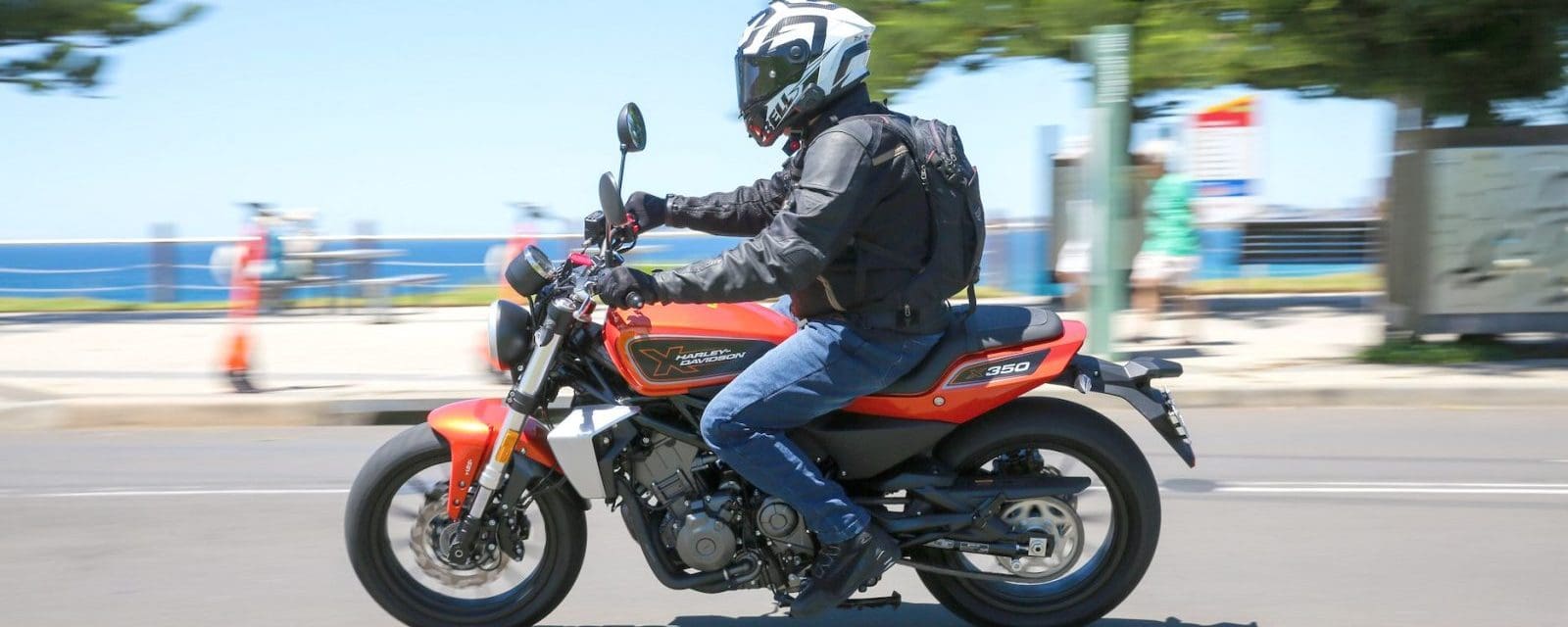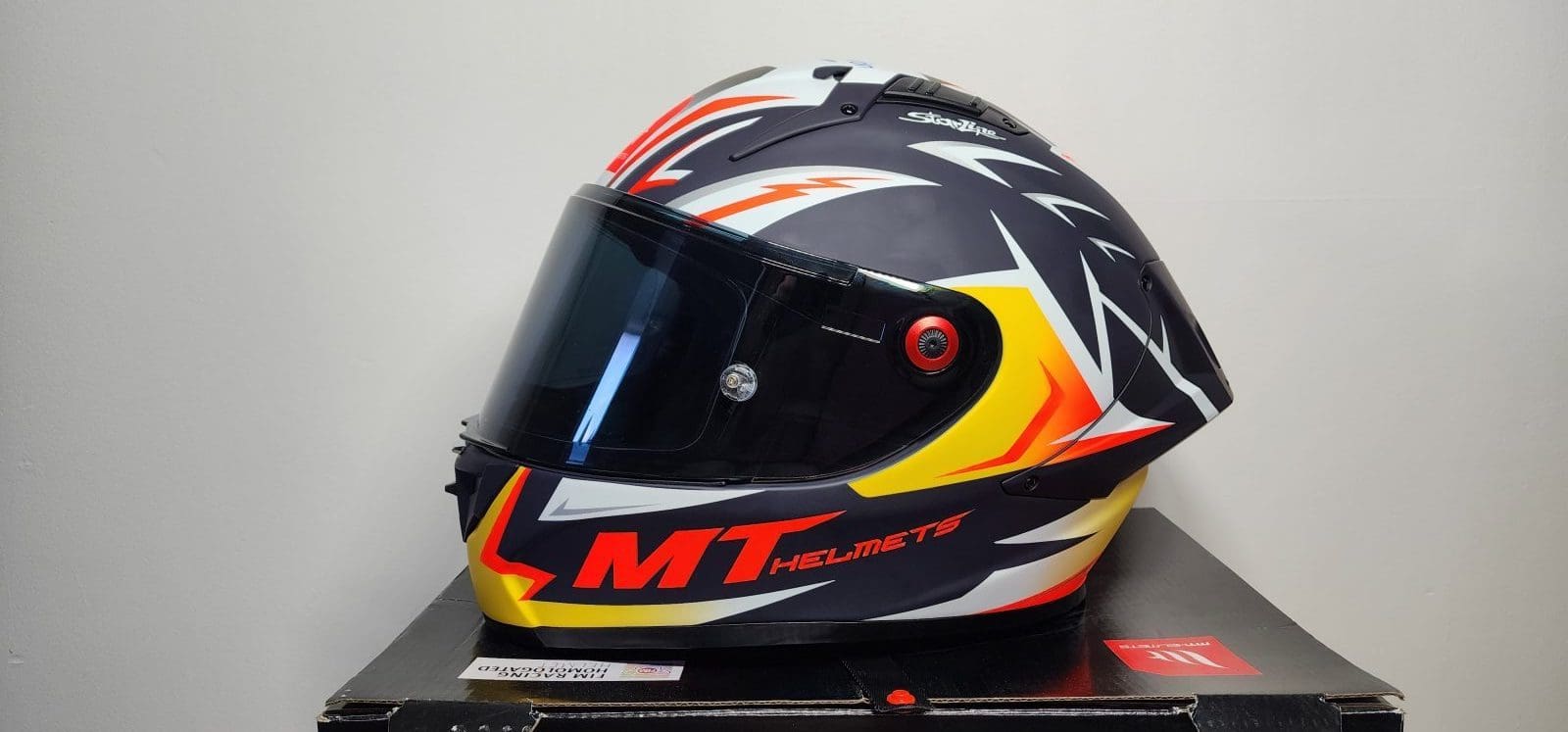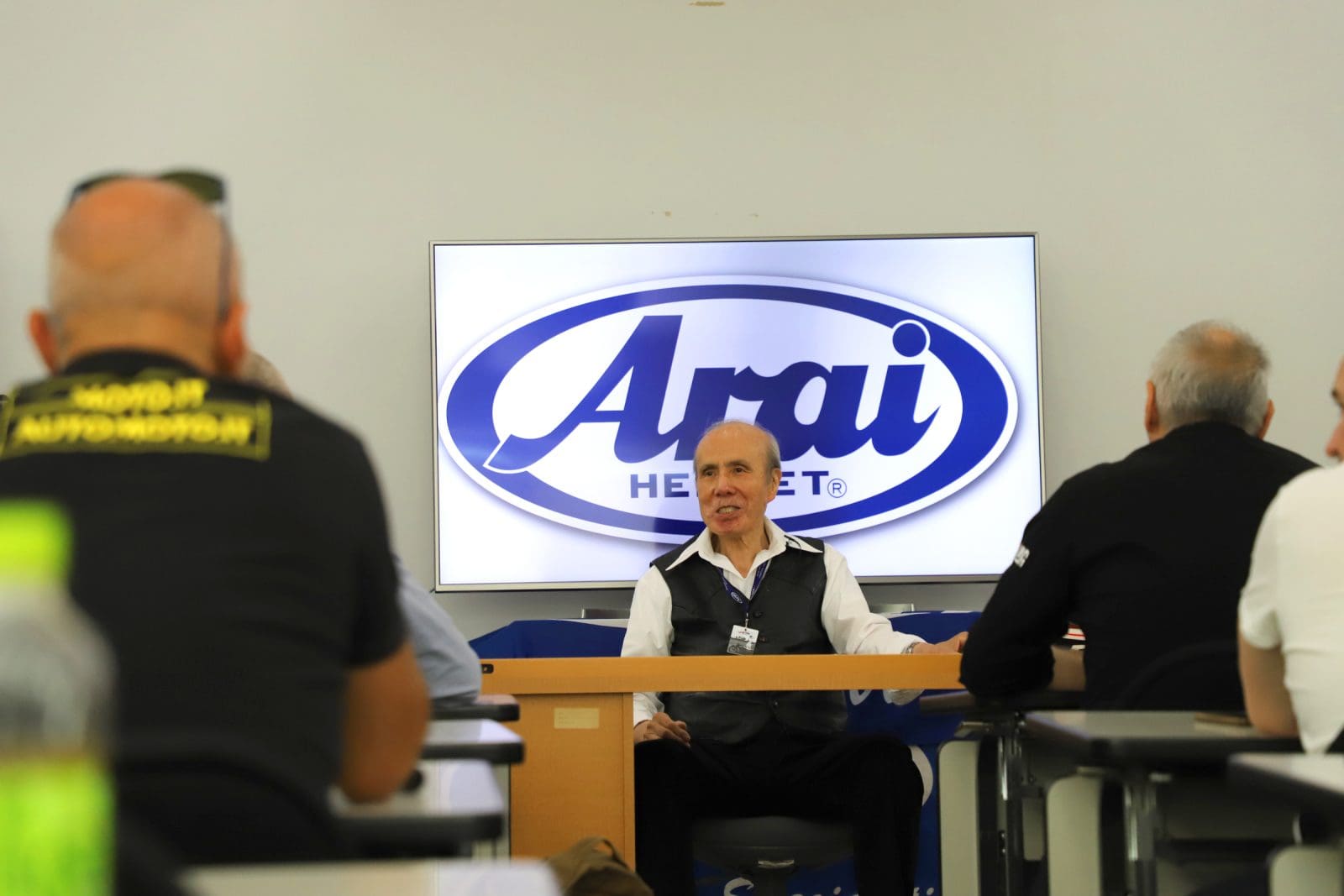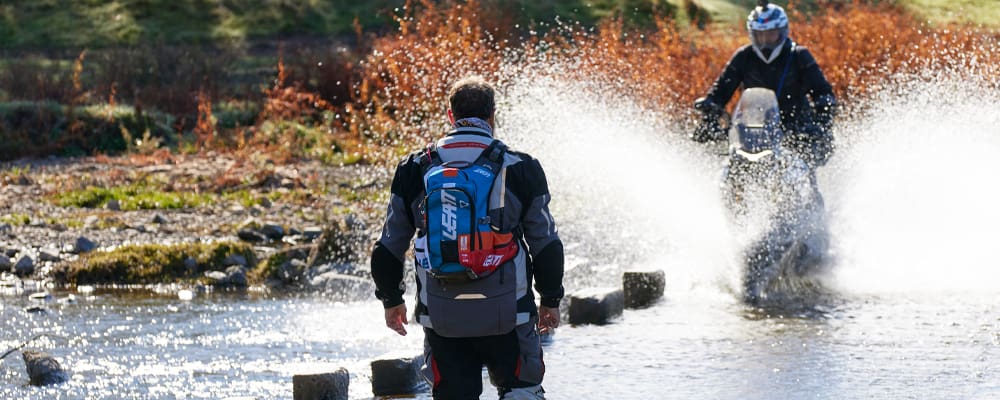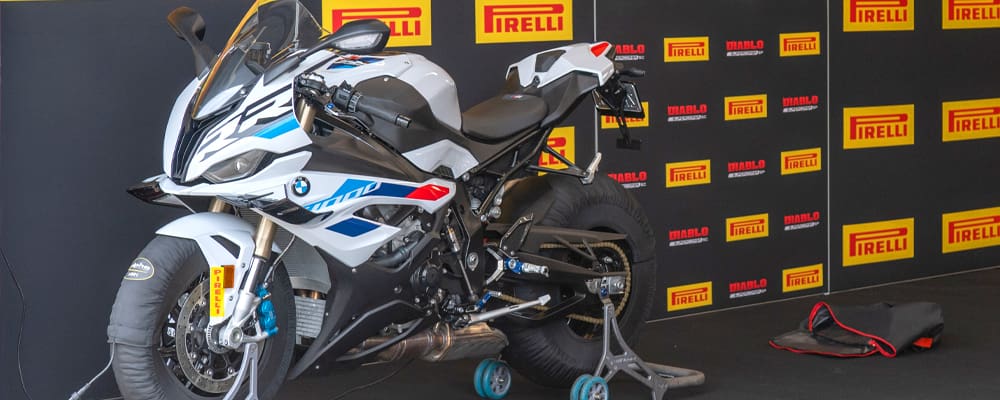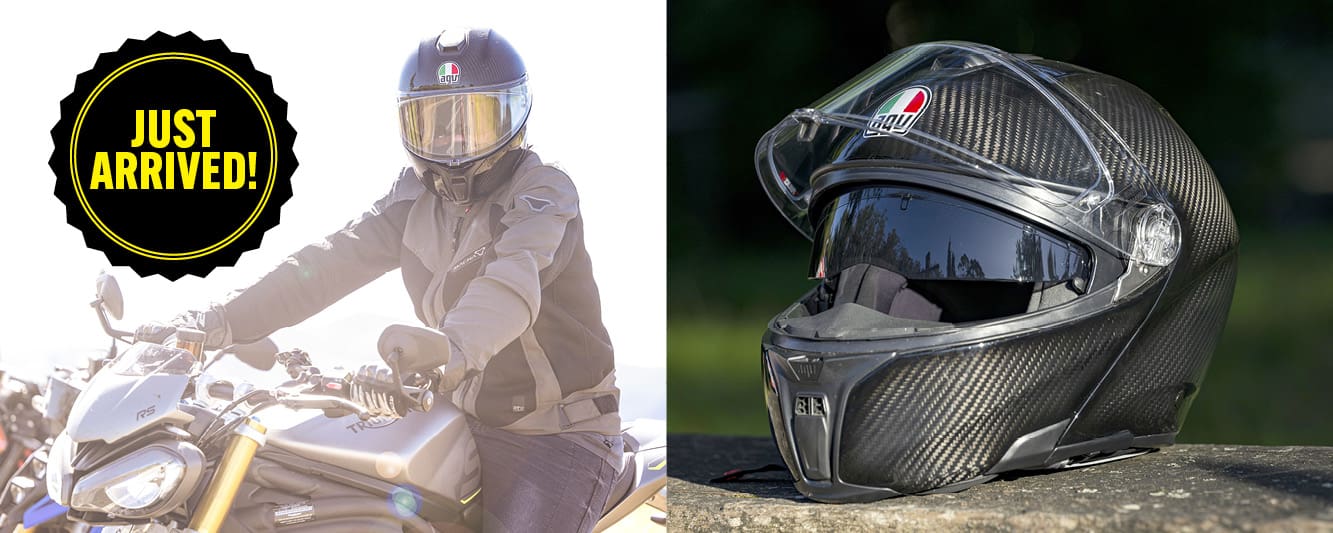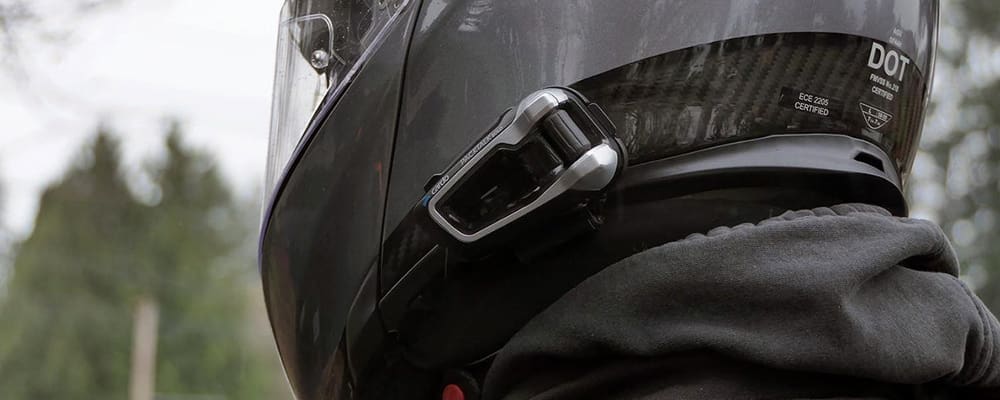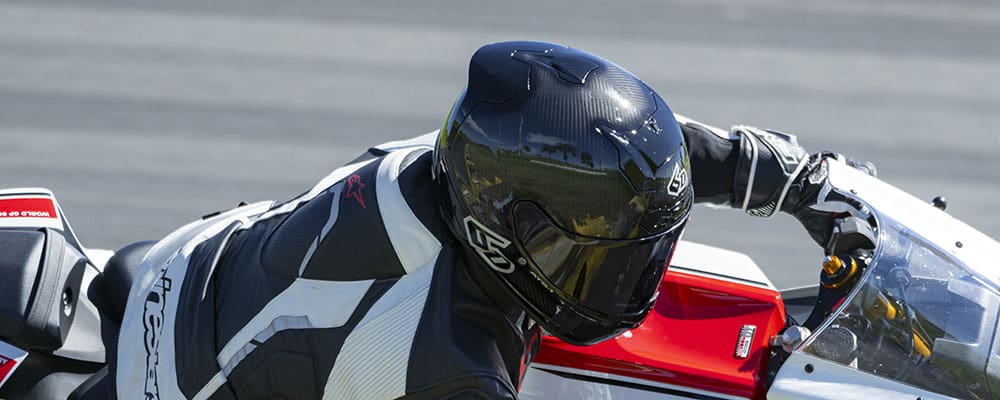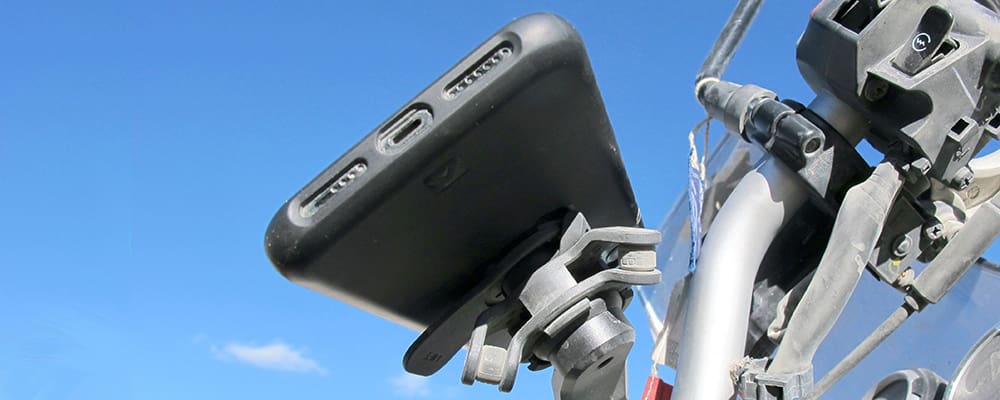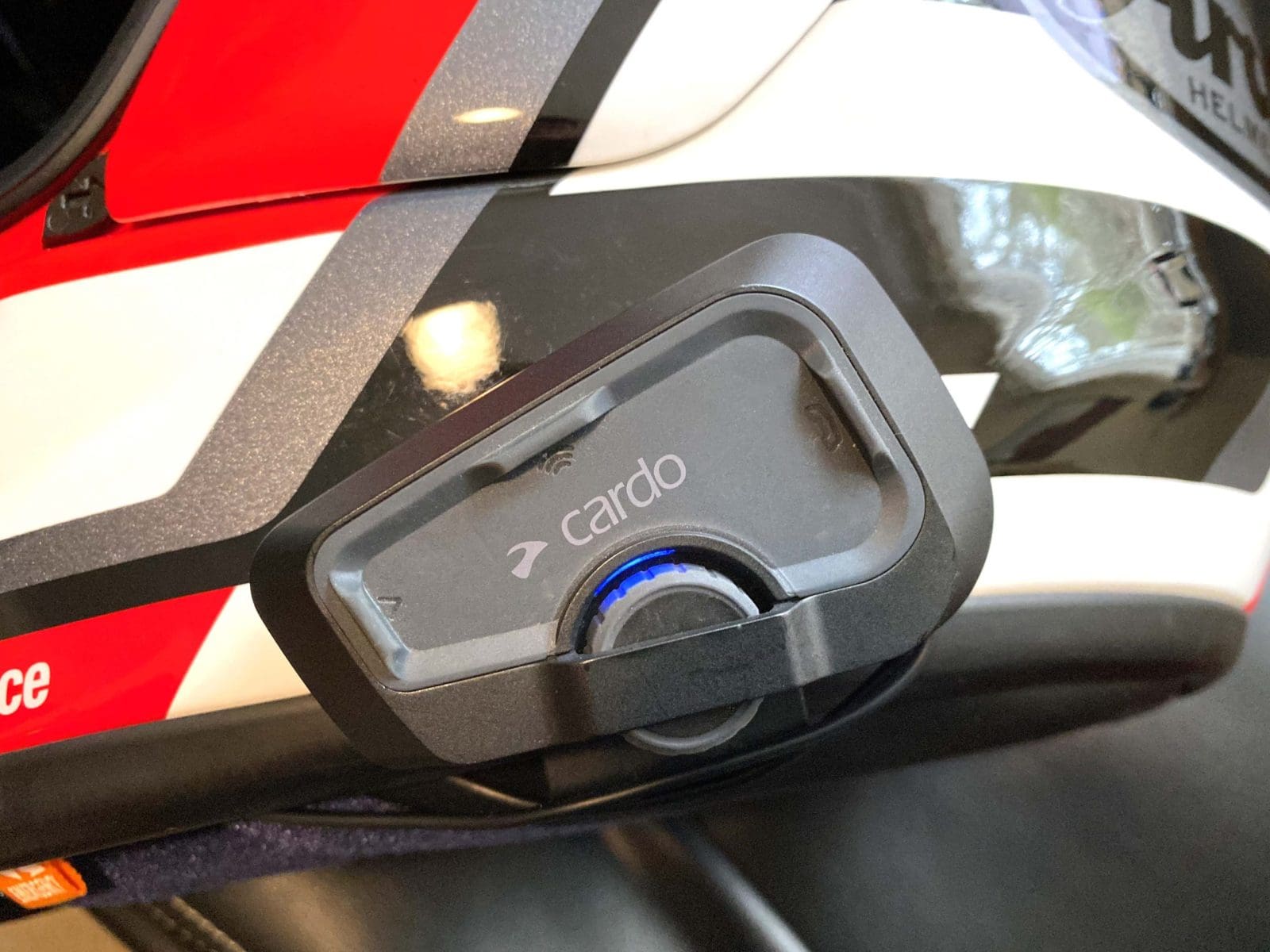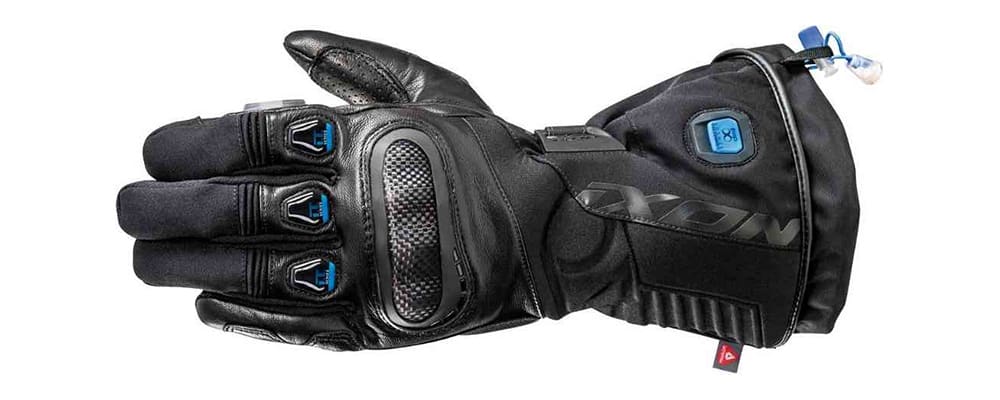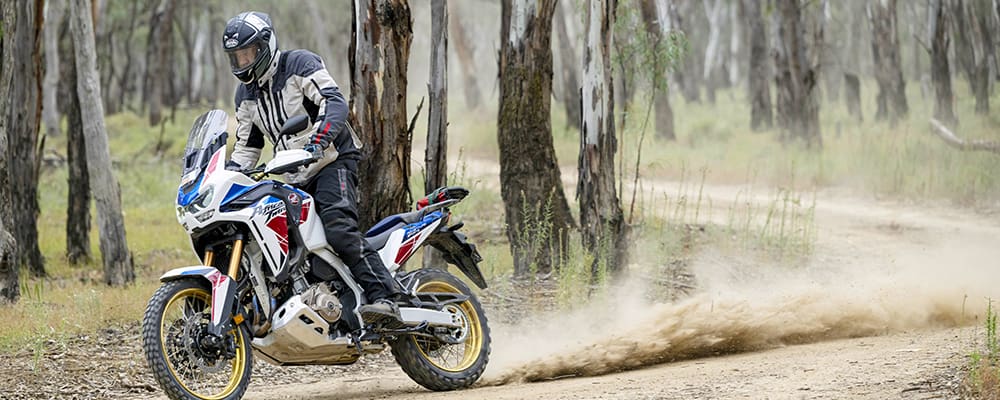South Africa may seem like an odd place for the international launch of a new performance tyre, and I must admit I was a little apprehensive also. But once on the ground, we tackled a real-world road ride followed by a full day thrashing around a circuit that’s one of the most enjoyable I’ve ridden.
And as the test unfolded, we poked and we prodded Pirelli’s new hypersport tyre, putting it under pressure on the road and the track with a critical eye. But, despite our best efforts, we’re still looking for something negative to say about it.
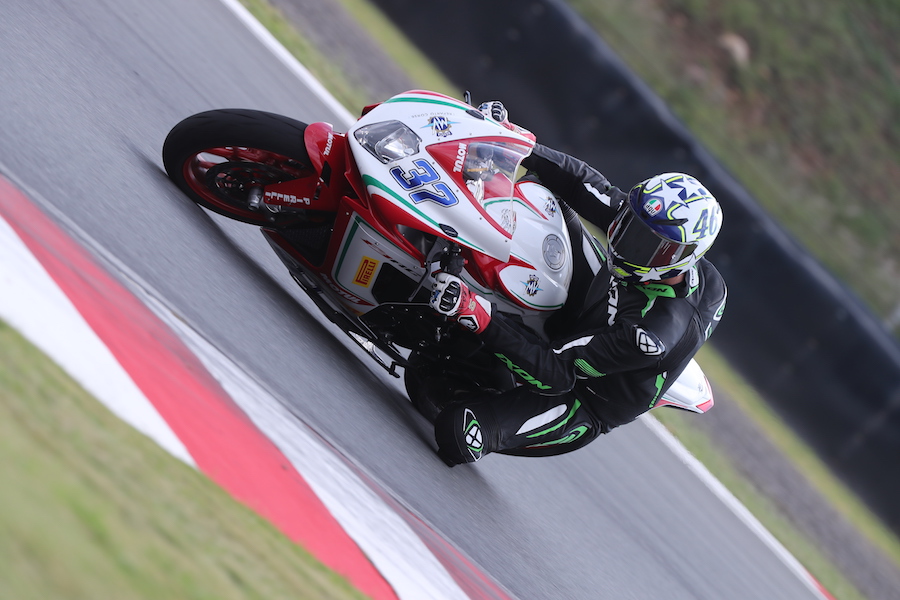
Road Test
The area around the Kruger National Park is bursting with natural beauty, but the local roads are not.
Kilometre-long potholed sections contain crevasses so broad and deep that two of the test bikes returned on the back of a truck; one with a buckled rim, the other with a holed radiator.
Add the unpredictable driving habits of the locals, as well as nuts of the edible kind, and a whole heap of care needs to be taken.
I tackled the opening 50km stage from Hazyview to the town of Sabie aboard the BMW S 1000 R. The first 10km was pothole city, on a patchy surface scattered with loose gravel. Initially the pace was slow, but once we realised the tyres were well up to the task of gripping the suspect surface, the speed quickened to the point where it became a pothole slalom course.
Into the hills, and better road conditions, the Diablo Rosso Corsa II quickly displayed its impressive ability as a road-performance tyre, gripping tightly to the smooth but patchy surface without a hint of slip or protest from the front or the rear.
I swapped to Honda’s CBR1000RR SP for the fast-sweeping turns that snake north towards Graskop, and it was here that I first noted an interesting characteristic of the dual-compound front tyre.

The impressive feel from the front is accompanied by a slight resistance to turn-in, but not in a bad way; in fact, quite the opposite. Instead of falling into a corner, a small amount of extra pressure is required on the inside ’bar to coax the bike down to the lean angle you desire; the backpressure amplifies the feel from the contact patch. This is most likely due to a combination of a stickier rubber compound on the shoulder of the tyre, and the tyre’s profile.
Adding a degree of difficulty to our return ride was a moon-crater section littered with Macadamia nuts spilt from a delivery truck.
Despite everything the local roads had thrown at us, the Diablo Rosso Corsa II passed with flying colours, but a three-hour road ride is a piece of cake compared to the full track day that was to follow.
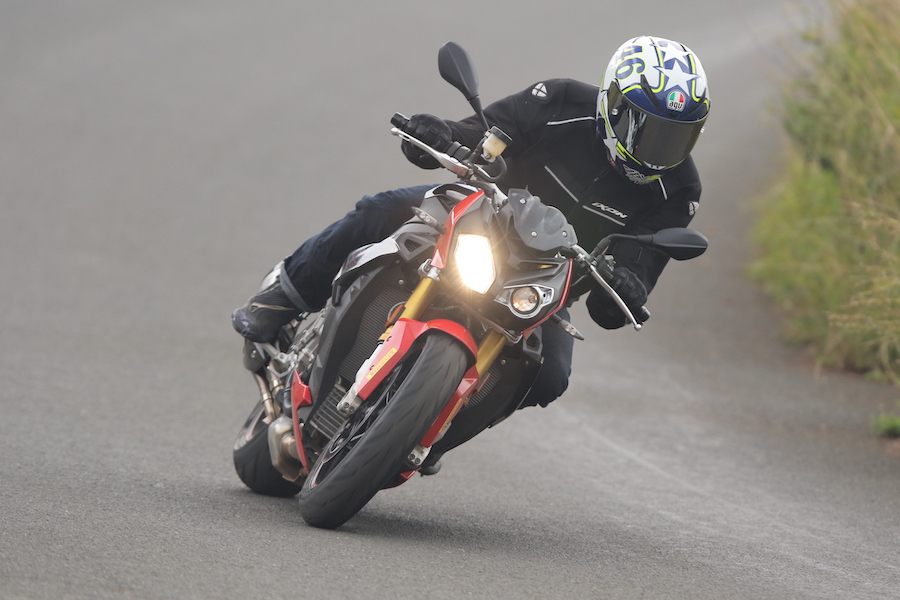
Track Test
South Africa’s Kyalami Grand Prix Circuit, located 25km from the Johannesburg CBD, received a massive upgrade in 2014 after it was sold to a cashed-up racing enthusiast. With eyes firmly set on hosting a WorldSBK and/or MotoGP round, its facilities are second only to the undulating 16-turn, 4.522km FIA-grade circuit.
The circuit is fast, smooth, wide and challenging. With a combination of blind corner entries and sweeping high-speed bends, this is a circuit that takes a few sessions to learn, and possibly a lifetime to master.
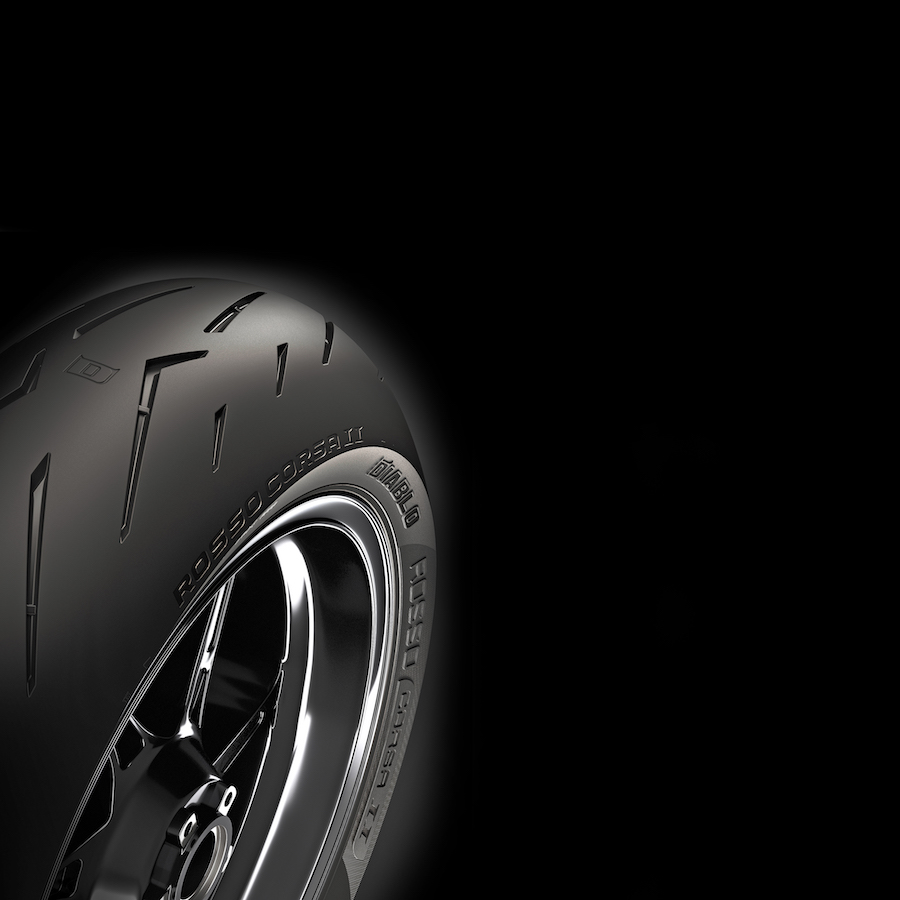
The selection of track-thrash test units included just about every production superbike and supernaked available, including Ducati’s new Panigale V4 fitted with Pirelli’s specially developed 200/60ZR17 rear tyre.
Being designed primarily for the road, the Diablo Rosso Corsa II requires a fast warm-up time to prevent riders from sliding off at the end of their street. By Turn 3 of my opening session on the Fireblade, the tyres were gripping nicely at the front and rear. Within a lap, I had the bike at full lean angle.

As I cycled through the ’Blade, BMW’s S1000RR, MV Agusta’s F800RC and, of course, the Ducati Panigale V4, I arrived at a point where I had reached the limit of my skill level, but the tyres still had plenty to give. It’s as much tyre as I’ll ever need on a roadbike or at a track day.
The front-end turn-in feeling I described on the road ride was again evident, providing dollops of front-end feel. Due to my ample height and weight, I ask a lot of the front tyre – sometimes too much – but the Corsa II took everything I threw at it, leaving me to explore the boundaries of the rear tyre’s grip level.
It wasn’t until well after lunch, once each bike had spent a day cycling through three groups of riders, that the rear tyre on the MV F800RC started to slide a bit on corner exit, but it was a gentle and controllable slide with plenty of warning and feedback.
The super-grippy race-rubber compound used on the tyre’s shoulder made it feel every bit like a Supercorsa on corner entry and exit; it was only through the superfast sweepers that the tyres began to drift a little offline under the lateral forces.
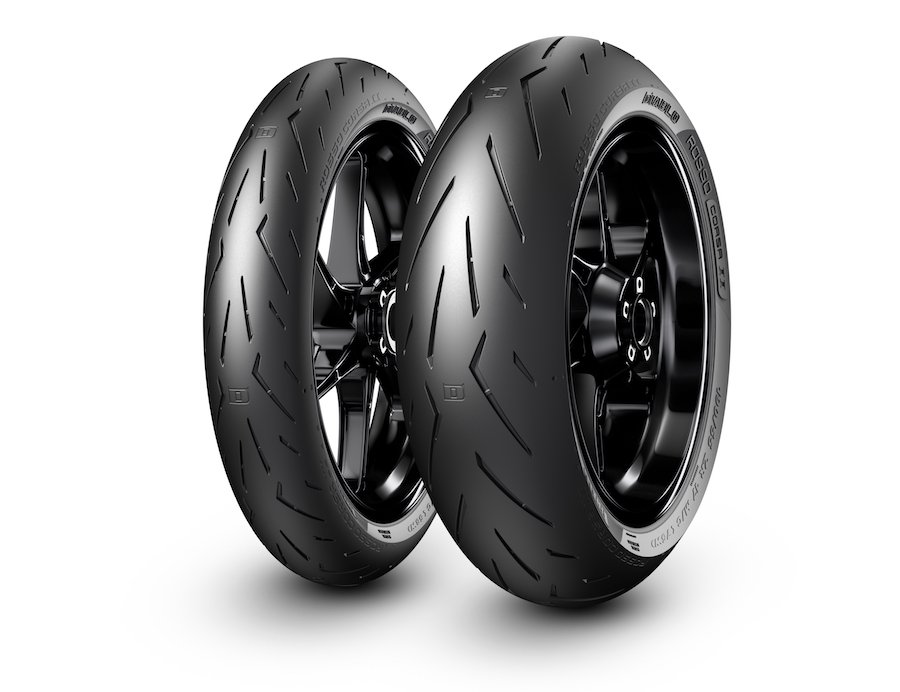
Compounds
The five-track, three-compound rear tyre is a first for Pirelli.
The single hard-compound central track is 70 per cent silica with a tread pattern layout for maximum durability. The two middle tracks are 100 per cent silica and feature the highest ratio of tread pattern for maximum wet weather grip.
The shoulders of the tyre are made from the same Carbon Black compound as Pirelli’s Diablo SC3 racing slick, with almost no tread pattern for maximum grip levels.
The three-track, two-compound front tyre uses the same two outer compounds as the rear tyre.
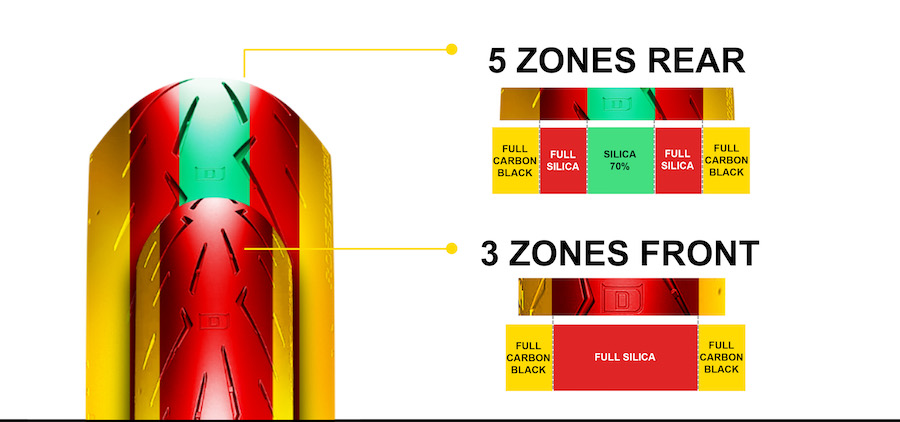
Verdict
By day’s end, each bike had been subjected to around four hours of continuous track time. That’s equivalent to three track days in the hands of an experienced rider. A quick scan of the bikes revealed plenty of tyres I’d happily continue to ride around on, and even use at another track day.
As a road tyre, I couldn’t imagine a scenario where a rider could explore the outer limits of its grip levels. As a track-day tyre it’s going to deliver enough grip and performance for all but the most experienced of riders.
Two questions are still to be answered about Pirelli’s new Diablo Rosso Corsa II tyre; how they perform in the wet, and the length of their durability as an everyday road and once-in-a-while track tyre. We plan to find the answers to these questions when the first batch of tyres arrives Down Under in June.
What I can tell you now is that fitting a set of Corsa II tyres means you won’t need to have track-day tyres and road tyres for your bike because this hoop will happily look after both duties – and keep coming back for more.
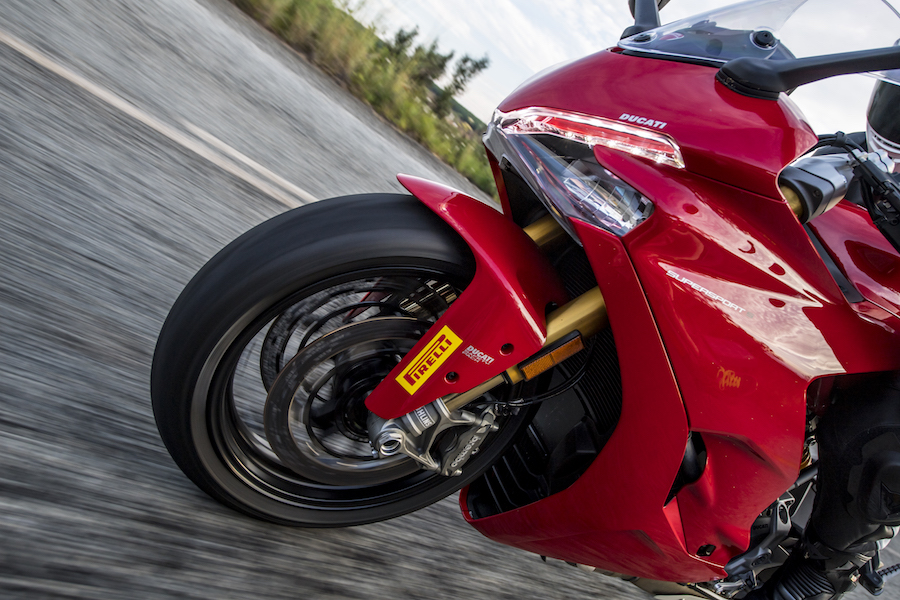
Tread Pattern
Pirelli’s famous lightning element tread pattern not only disperses water, it works with the connecting elements to minimise warm-up times. The overall void/fill ratio of the tyre is just six per cent.
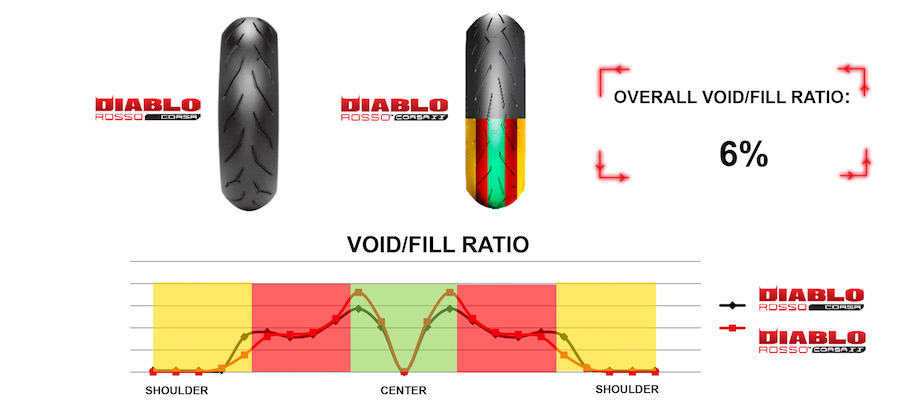
Spider-web chart
Pirelli’s spider-web chart compares the original Diablo Rosso Corsa with the new Corsa II. The chart reveals how much hypersport tyre development has progressed over the past seven years. Pirelli engineers have retained racetrack wear and high-speed handling while improving in all other areas.

Faster lap times and increased angle
Pirelli took to the Mugello circuit for a head-to-head between the 2011-released Rosso Diablo Corsa and the new Corsa II. A superbike fitted with the new Corsa II lapped the 5.245 km Italian circuit 0.9sec faster than the original tyre and offered four per cent more lean angle (48° versus 52°), providing an increase in corner speed.
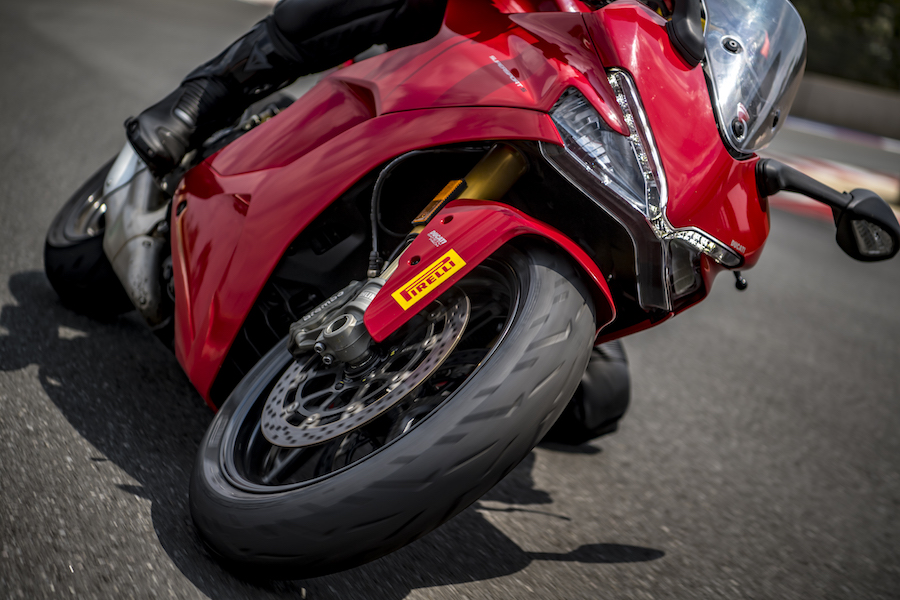
TEST CHRIS DOBIE PHOTOGRAPHY PIRELLI
